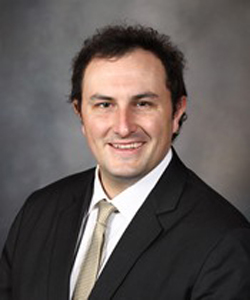Program Information
A Classification of Validation Tasks for Monte Carlo Simulations of CT Scanners: From Simple to Complex Source Models and Geometries
K McMillan*, M Khatonabadi, M McNitt-Gray, UCLA School of Medicine, Los Angeles, CA
SU-E-I-47 Sunday 3:00PM - 6:00PM Room: Exhibit HallPurpose: To develop a classification system of validation tasks for Monte Carlo simulations of CT scanners that reflects the level of complexities of source and object models used in Monte Carlo simulation methods within the medical physics community and specifically within X-ray CT dosimetry simulations.
Methods: In order to quantify the relative strength of CT Monte Carlo models developed for CT dosimetry with respect to imaging parameters such as source motion, tube current modulation, phantom type and location of measurement, we have devised a classification system consisting of six levels, each with a number of sublevels, that encompass an extensive number of validation scenarios. The complexity of the levels/sublevels ranges from very simple source and object models, such as simulating and validating a CTDI in air measurement at isocenter with a single axial source rotation and fixed tube current, to complex source and patient models, such as simulating and validating surface and depth dose integrated readings from TLDs for a patient model with helical source movement and tube current modulation. 15 unique CT Monte Carlo models found in the literature with some validation of Monte Carlo simulations were examined within the scope of the classification system.
Results: All 15 models had a primary validation measurement that fell under the first two levels of the classification system, CTDI measurements. Only 5 models demonstrated validation of the model beyond CTDI measurements. Only 2 of these models demonstrated helical scan validation. No models demonstrated tube current modulation validation.
Conclusion: This investigation has revealed that a vast majority of advanced CT dosimetry Monte Carlo simulations lack validation beyond CTDI measurements. This classification system has the potential to be used as a justification metric as to the appropriateness of a particular CT Monte Carlo model for use in a specific CT dosimetry simulation.
Funding Support, Disclosures, and Conflict of Interest: (a) Dr. McNitt-Gray: Institutional research agreement, Siemens AG; Recipient research support Siemens AG; Consultant, Flaherty Sensabaugh Bonasso PLLC; Consultant, Fulbright and Jaworski, LLC; (b) K McMillan: Research partially supported by a grant from Siemens AG; Research partially supported by a grant from AACR; Research partially supported by a grant from TRDRP; (c) M Khatonabadi: Research partially supported by a grant from Siemens AG
Contact Email:


